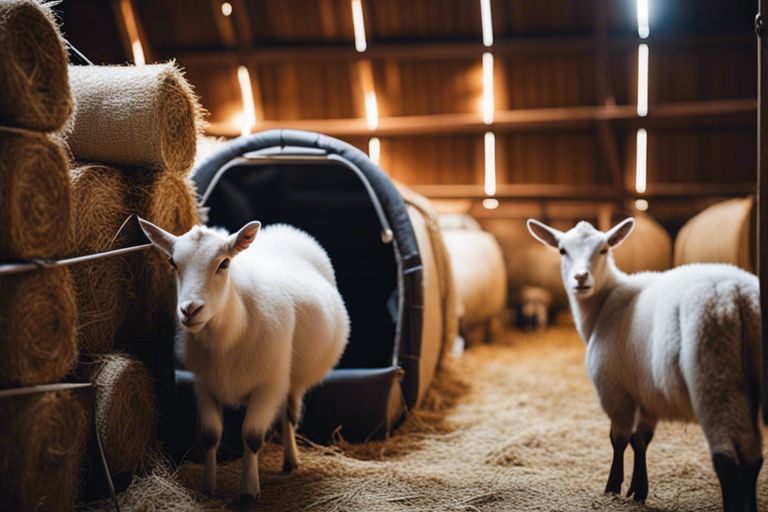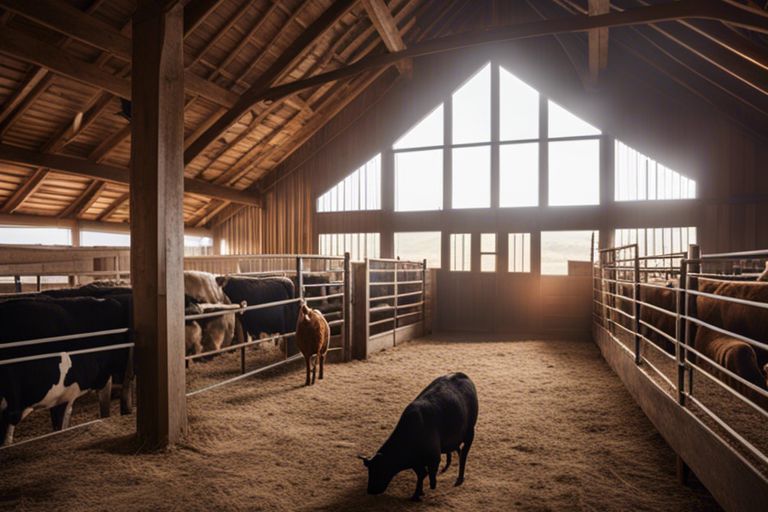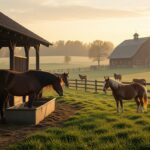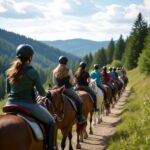Most livestock owners know the importance of keeping their animals safe and warm, especially during the colder seasons. Proper care and maintenance are crucial to ensure the well-being and comfort of your livestock. In this listicle, we will discuss 10 crucial tips to help you keep your animals safe and warm, no matter the weather conditions.
Shelter Maintenance
Insulate animal shelters
While providing shelter for your livestock is crucial, maintaining a warm and cozy environment is equally important. Little upgrades like insulating animal shelters can make a big difference in keeping your animals safe and warm during the colder months. Insulation helps trap heat inside the shelter, providing a comfortable space for your livestock to rest and stay healthy.
Repair structural damage
Even minor structural damage to animal shelters can compromise their ability to provide adequate protection from the elements. Regularly inspecting and repairing any damage, such as leaks, holes, or loose panels, is necessary in ensuring that the shelter remains sturdy and secure. Addressing these issues promptly can prevent further damage and maintain the structural integrity of the shelter.
Maintenance of animal shelters should be a top priority for livestock owners to ensure the well-being and safety of their animals. By regularly inspecting, insulating, and repairing any structural damage, you can create a secure and comfortable environment for your livestock year-round.
Bedding Material
Provide dry bedding
There’s nothing more important than ensuring your livestock have access to dry bedding material. Wet bedding can increase the risk of hypothermia and other health issues for your animals. Make sure to provide ample dry bedding, such as straw or wood shavings, especially during the winter months.
Change bedding regularly
You’ll want to regularly change the bedding in your livestock’s shelter to maintain a clean and healthy environment. This is crucial for keeping your animals warm and comfortable, as well as preventing the buildup of moisture and bacteria. Aim to change the bedding at least once a week, or more frequently if needed.
Changing the bedding regularly not only promotes good hygiene but also helps to manage odors and reduce the risk of infection. By keeping the bedding clean and dry, you can ensure that your livestock stay healthy and happy throughout the year.
Warmth Sources
Utilize heat lamps
Clearly, heat lamps are a popular choice for providing warmth to livestock, especially in colder months. Make sure to hang them securely at a safe distance from any bedding material or flammable objects to prevent accidents. Regularly check the condition of the heat lamps and replace them if there are any signs of damage.
Monitor temperature closely
An crucial aspect of keeping livestock warm is monitoring the temperature closely. This can be done using a thermometer placed in the area where the animals are housed. Ensure the temperature remains within the optimal range for the specific type of livestock you have. Any sudden fluctuations should be addressed promptly to prevent health issues.
While monitoring temperature closely
| Benefits | Considerations |
| Prevents hypothermia or heat stress | Requires regular checking and adjustment |
Warmth
When providing warmth to livestock, it’s crucial to ensure that the source is safe and effective. Whether using heat lamps, heaters, or heat pads, always prioritize the well-being of your animals. Additionally, be mindful of any potential fire hazards and follow all safety precautions to prevent accidents.
Warmth sources breakdown
| Electric vs. Infrared heaters | Safety measures |
| Efficiency and cost | Proper installation and maintenance |
Windbreaks Installation
All livestock owners know the importance of providing a safe and warm environment for their animals, especially during harsh weather conditions. Installing windbreaks around your livestock area is vital to protect them from cold winds and adverse weather. Here are some tips to ensure the installation process is done effectively:
Construct outdoor barriers
One of the first steps in installing windbreaks is to construct solid outdoor barriers that can shield your livestock from strong winds. These barriers can be made of durable materials such as wood or metal and should be tall enough to provide adequate protection. Make sure the barriers are securely anchored to the ground to withstand strong gusts of wind.
Check for durability
Any materials used in the construction of windbreaks must be durable enough to withstand harsh weather conditions for an extended period. This includes regularly checking for any signs of wear and tear or damage that may compromise the effectiveness of the barriers. Replace any worn-out parts immediately to ensure the safety and comfort of your livestock.
This proactive approach will help maintain the integrity of the windbreaks and ultimately protect your livestock from the elements, ensuring their safety and well-being.
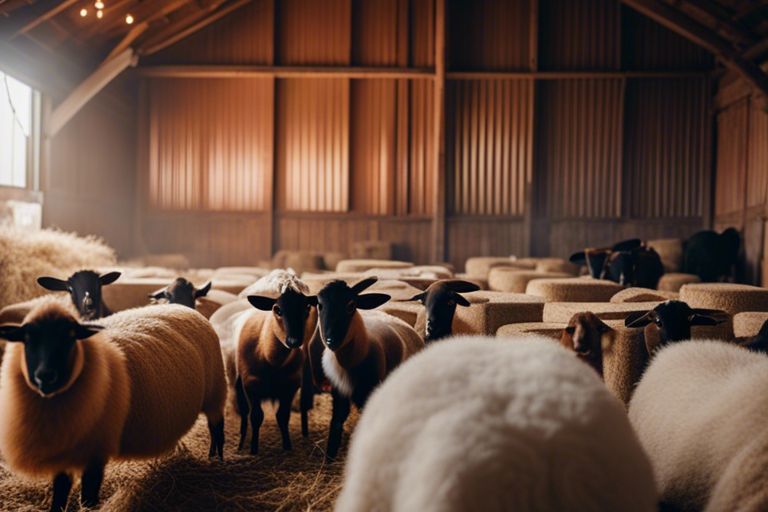
Monitoring Health
Regular health checks
To ensure the well-being of your livestock, it is crucial to conduct regular health checks. Schedule routine inspections to monitor their overall health, body condition, and behavior. By being proactive and identifying any potential issues early, you can prevent more serious health concerns from arising.
Recognize distress signs
For livestock owners, being able to recognize distress signs is vital in monitoring their health. Some common signs of distress include changes in appetite, lethargy, abnormal droppings, or unusual behavior. Keep an eye out for these indicators as they may signify underlying health issues that require immediate attention.
Health concerns can manifest differently in various livestock species, so it’s crucial to familiarize yourself with the specific distress signs for each type of animal under your care. Regular observation and swift action can make a significant difference in maintaining the health and wellness of your livestock.
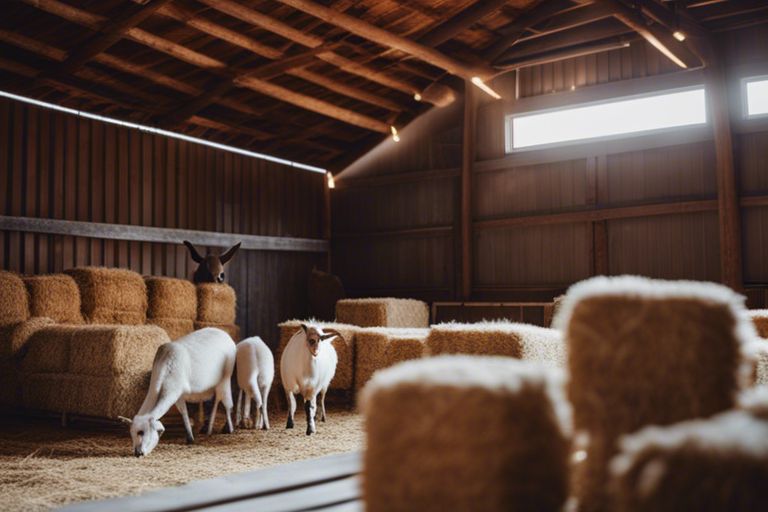
Water Supply
Prevent water freezing
Water is imperative for the well-being of your livestock, especially during winter months. One of the biggest challenges you might face is preventing the water from freezing. Not having access to water can lead to dehydration and other health issues for your animals. Ensure you have a reliable heating system in place to keep the water from freezing, or consider using insulated water buckets or troughs to prevent ice buildup.
Supply warm water
One imperative tip for keeping your livestock safe and warm is to supply them with warm water, especially in colder temperatures. Cold water can lower the core body temperature of animals, making it harder for them to stay warm. To ensure your livestock have access to warm water, consider installing a water heater in their drinking troughs or buckets.
To provide warm water to your livestock, you can also manually mix hot water with the cold water in their watering containers throughout the day. This small effort can make a big difference in helping your animals stay comfortable and healthy during the winter.
Nutrition Boost
Increase Calorie Intake
Despite the cold weather, it is important to ensure that your livestock are getting enough calories to keep them warm. Consider increasing their calorie intake by providing them with nutrient-rich feed, such as grains and legumes, to help them maintain their body heat during the winter months.
Adjust Feeding Schedules
Clearly, adjusting feeding schedules during the winter can help ensure that your livestock are getting the necessary nutrients to stay healthy and warm. If your animals are spending more energy trying to stay warm, they may need to eat more frequently to maintain their body condition.
If you notice that your animals are struggling to maintain their weight during the colder months, consider increasing the number of feeding schedules throughout the day. This can help them receive a steady supply of nutrients and energy to keep them in good condition despite the harsh weather.
Livestock Clothing
Many people don’t realize the importance of clothing for livestock to keep them safe and warm during harsh weather conditions. Livestock clothing can provide imperative protection and comfort, ensuring the well-being of your animals all year round.
Use horse blankets
You can use horse blankets to provide extra warmth and protection for your livestock, especially during colder months. Horse blankets are designed to be durable and water-resistant, making them ideal for outdoor use. Be sure to choose the right size and weight of blankets based on the individual needs of your animals.
Tailor-fit for animals
You’ll want to ensure that the clothing you choose for your livestock is tailor-fit for their specific needs. Ill-fitted clothing can cause discomfort and even restrict movement, so it’s imperative to measure your animals accurately and choose clothing that fits them properly. Look for options that are adjustable and provide a snug yet comfortable fit.
Any clothing you provide for your livestock should be made of high-quality materials that are breathable and insulating. Avoid clothing that is too tight or restrictive, as this can lead to chafing or other health issues. Regularly check the condition of the clothing to ensure it is still in good shape and providing the necessary protection.
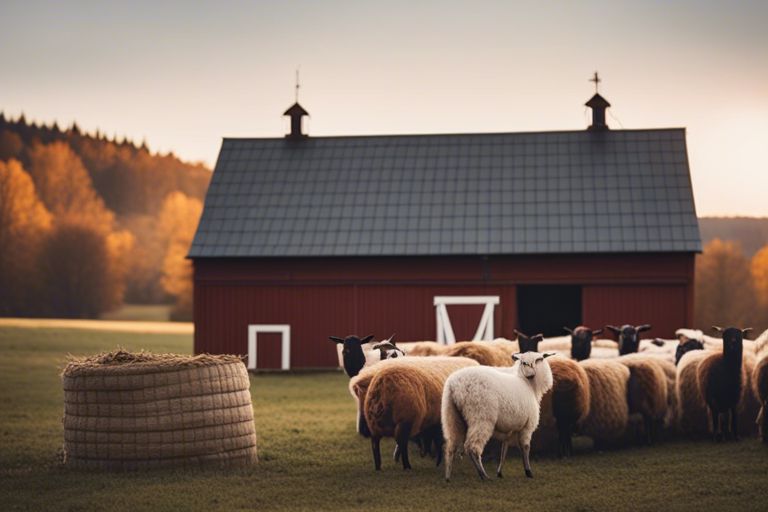
Group Housing
Encourage huddling behavior
Your livestock animals are social creatures and often huddle together for warmth. Encouraging this behavior can help them regulate their body temperature more effectively. Provide ample bedding, shelter, and windbreaks in their living area to create a cozy environment where they can gather together during cold weather.
Manage group sizes
Sizes of livestock groups are crucial for maintaining a comfortable and safe living environment. You should consider the size of your livestock and the available space when deciding on group sizes. Overcrowding can lead to stress, aggression, and increased competition for resources. Keep groups small enough to prevent these issues and ensure that all animals have equal access to food, water, and shelter.
Plus, smaller group sizes also make it easier to monitor the health and behavior of individual animals. This allows you to quickly identify and address any issues that may arise, ensuring the overall well-being of your livestock herd.
To wrap up
So, ensuring the safety and warmth of your livestock is crucial for their health and well-being during the cold winter months. By following these 10 crucial tips such as providing adequate shelter, proper nutrition, and monitoring for signs of frostbite, you can help keep your animals safe and comfortable. Keep in mind, a well-prepared and insulated barn, access to fresh water, and regular health check-ups are crucial for maintaining the health of your livestock in winter. By implementing these practices, you can ensure that your animals stay healthy and warm throughout the season.
FAQ
Q: Why is it important to keep livestock safe and warm?
A: Livestock need to be kept safe and warm to ensure their health and well-being, especially during cold weather.
Q: What are the risks of not keeping livestock warm?
A: Failure to keep livestock warm can result in health issues such as hypothermia, frostbite, and even death.
Q: How can I provide warmth to my livestock?
A: You can provide warmth to your livestock by ensuring they have access to shelter, bedding, and proper nutrition.
Q: What are some common shelter options for livestock?
A: Common shelter options for livestock include barns, sheds, and three-sided structures that provide protection from wind and precipitation.
Q: How can I ensure my livestock have enough bedding for warmth?
A: Make sure to regularly clean and replenish bedding materials such as straw, hay, or sawdust to provide insulation and warmth for your livestock.
Q: What nutritional requirements are important for keeping livestock warm?
A: Providing your livestock with a balanced diet that includes enough energy and nutrients is crucial for helping them generate heat and stay warm.
Q: Are there any specific considerations for different types of livestock?
A: Yes, different types of livestock may have specific requirements for staying warm, so it’s important to research and understand the needs of each species you are caring for.
